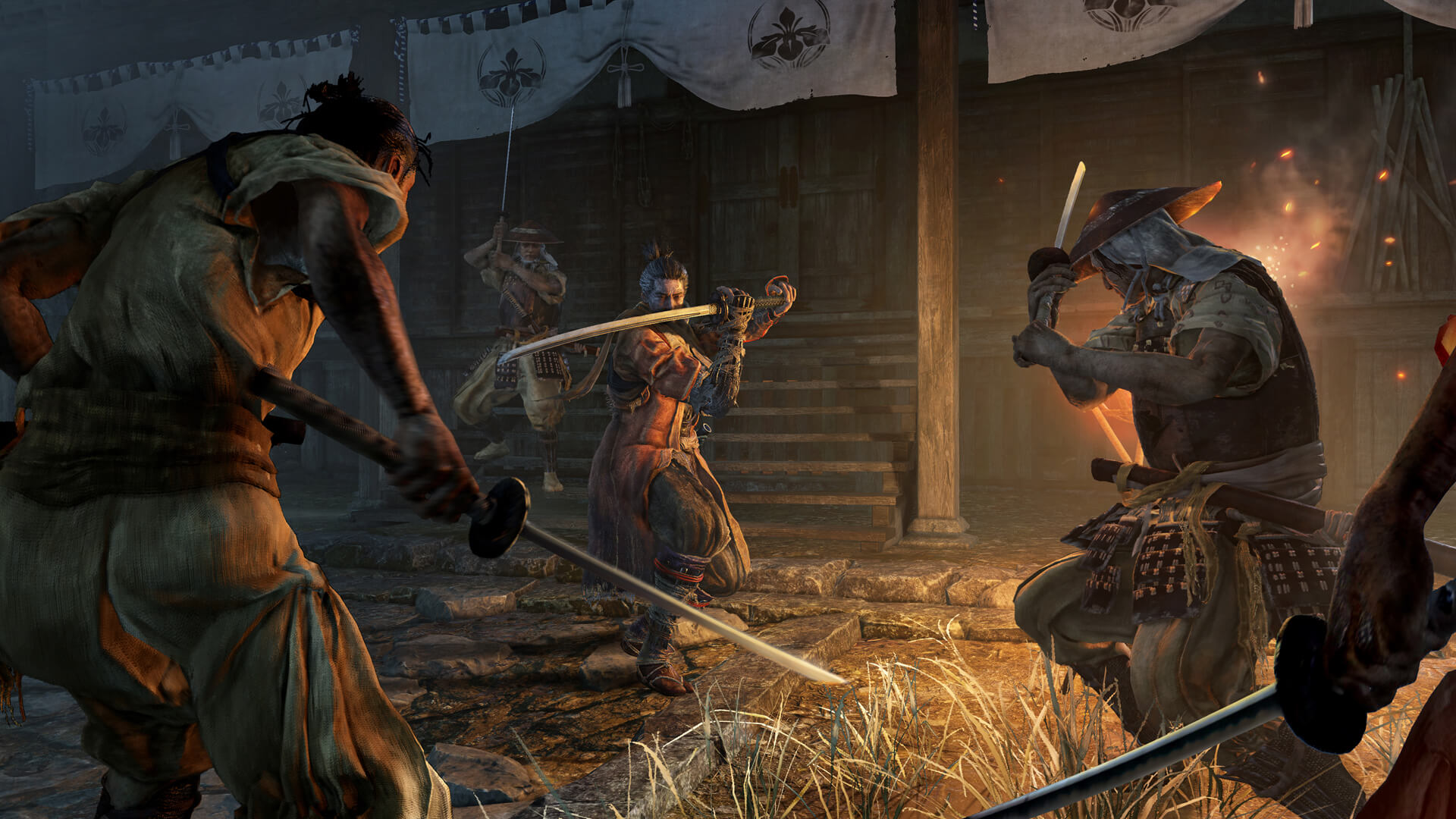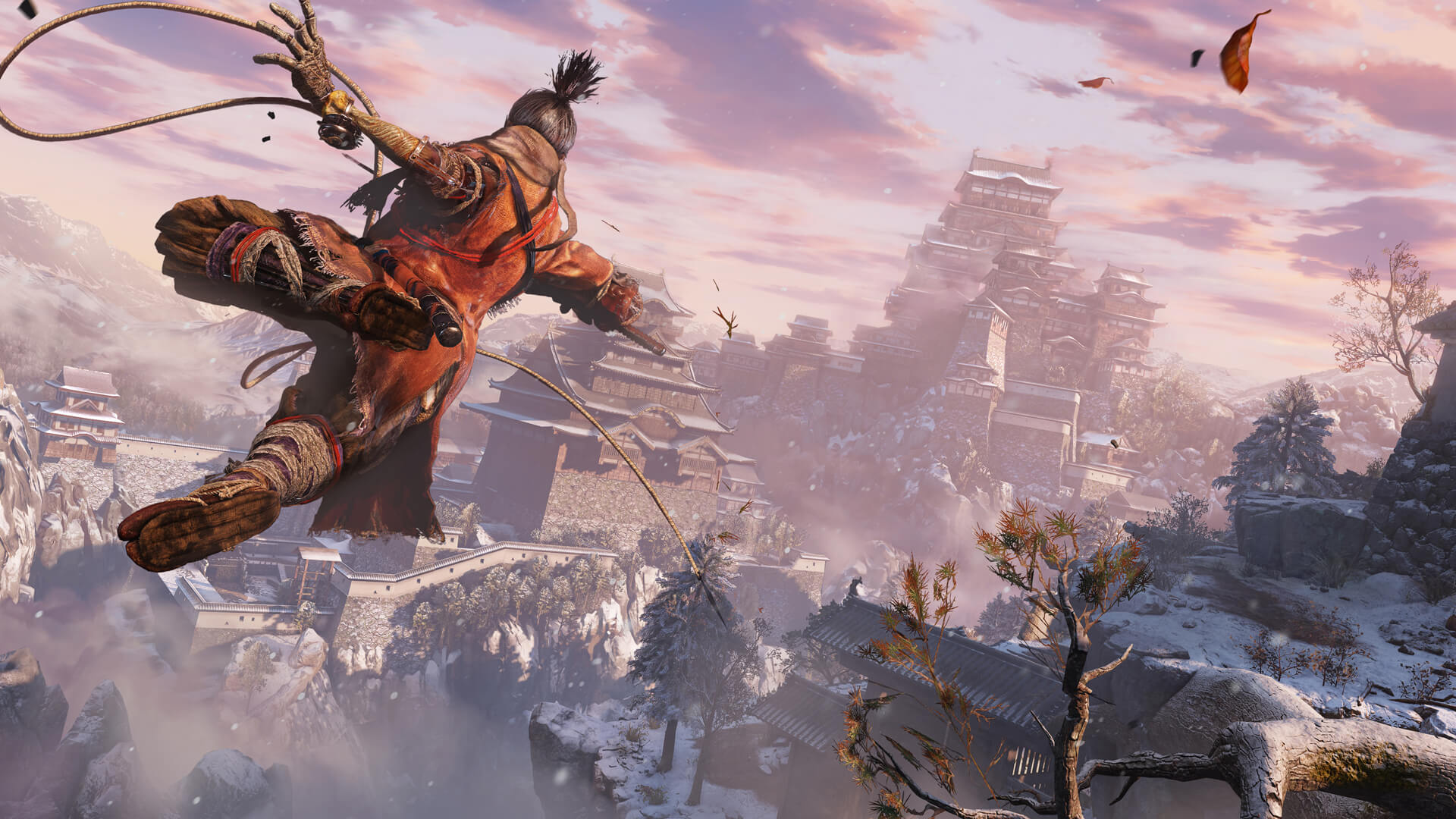In Sekiro, Shadows Die Twice, But You’ll Die a Whole Lot More
Sekiro: Shadows Die Twice is an atmospheric action/adventure game set in a light fantasy version of 15th-century Japan.
LOS ANGELES – If there’s one thing I’ve learned, it’s to never bet against a game by From Software. The idiosyncratic Japanese developer has made a habit of developing dark, brutal, punishing games that inspire lifelong loyalty from fans rather than alienating them. Sekiro: Shadows Die Twice is From’s latest effort: an atmospheric action/adventure game set in a light fantasy version of 15th-century Japan. The game won’t play exactly like Dark Souls or Bloodborne, but you’ll get a grappling hook, so it balances out.

At E3 2018, I saw two members of From’s development team show off Sekiro: Shadows Die Twice. The game is both more and less like the Souls series than I expected. For starters, Sekiro is not a role-playing game. You don’t collect souls from fallen enemies and exchange them for stat upgrades; the game is much more about honing a predetermined set of skills to make your way through one tough situation at a time. But the game is still all about tight, rhythmic combat, exploring large levels with branching pathways and fighting enormous, grotesque monsters that can kill you in just a few hits.
MORE: Best of E3 2018: The Games and Gear to Watch
In this game, players take control of Sekiro: a shinobi (ninja) during Japan’s feudal Sengoku period. Like From Software’s other games, a lot about the story is vague and representational. An evil samurai kidnaps Sekiro’s ward, The Young Lord, and Sekiro must travel across Japan to retrieve the boy. To do so, Sekiro will have to make ample use of both his katana, and his mysterious, mechanical left arm.
In the level I saw, Sekiro had to make his way from the base of a mountain up to an ornate castle up near the top. (It just wouldn’t be a From Software game without a castle somewhere.) The first thing that the developers showed off was that the game will feature some light stealth mechanics. Sekiro can sneak up behind foes, then dispatch them with (usually) a single hit. While the game is not a full-blown stealth experience, combat is a high-stakes, high-precision experience, and anything to thin enemy numbers will help Sekiro on his way.
From there, we got a taste of katana combat, which weaves together light attacks, heavy attacks, dodging and parrying. The developers explained that they wanted to create a feeling of sword-on-sword combat, complete with the clash of steel and showers of sparks we know and love from samurai movies. Enemies attack quickly and without mercy, meaning that you’ll have to either get out of the way or learn to block their techniques. Blocking is usually the superior option, since it means you can often perform a devastating counterattack, but it requires split-second timing. Like the Souls series, a lot of Sekiro’s adventure will rely on trial and error to learn enemy attack patterns.
Speaking of the “error” part of the equation, death is a central mechanic in Sekiro: Shadows Die Twice. When you die, enemies will walk away from you and assume that the fight is over. But you will occasionally be able to resurrect on the spot, giving you a second chance to get the jump on foes. The developers didn’t discuss exactly how the death mechanic will work, but in desperate situations, you’ll at least sometimes have a chance to turn the tide of battle after making one mistake too many.

Sekiro’s mechanical arm also plays a vital role in the game. With it, he can operate a grappling hook, affixing it to tree branches, castle parapets and even enemies. In one instance, the developers stalked a lone soldier from the treetops until they could get the literal drop on him without alerting nearby patrols. In another, they leaped across a vast chasm, a convenient tree branch saving them from a deadly fall.
Sign up to get the BEST of Tom's Guide direct to your inbox.
Get instant access to breaking news, the hottest reviews, great deals and helpful tips.
But the mechanical arm also has combat applications. Many of the enemies carry giant shields, making katana combat nearly impossible. In these situations, Sekiro can transform his mechanical appendage into an enormous battle axes, separating shield from wielder, and opening them up to regular swordfights. Although the developers were cagey about how character upgrades might work in this game, having a system to improve the arm’s applications over time seems like a solid bet.
From Software’s fascination with giant enemies hasn’t abated, either. As he scaled the side of the mountain leading up to the castle, Sekiro came face-to-face with a colossal albino snake, and had to sneak and grapple his way past the enormous beast. (Fighting it doesn’t seem to be an option; it’s easily as large as a whale.) From there, he ventured into a hidden area where he had to fight against a gigantic ogre, whose sword swings filled a narrow bridge on which the two combatants fought.
Sekiro: Shadows Die Twice may have looked like “samurai Dark Souls” at first glance, but the truth is a little more complex than that. The game may be a bit more straightforward than From’s other titles, but it doesn’t look any easier, or any less entertaining. The game will come out in early 2019.
Marshall Honorof is a senior editor for Tom's Guide, overseeing the site's coverage of gaming hardware and software. He comes from a science writing background, having studied paleomammalogy, biological anthropology, and the history of science and technology. After hours, you can find him practicing taekwondo or doing deep dives on classic sci-fi.

